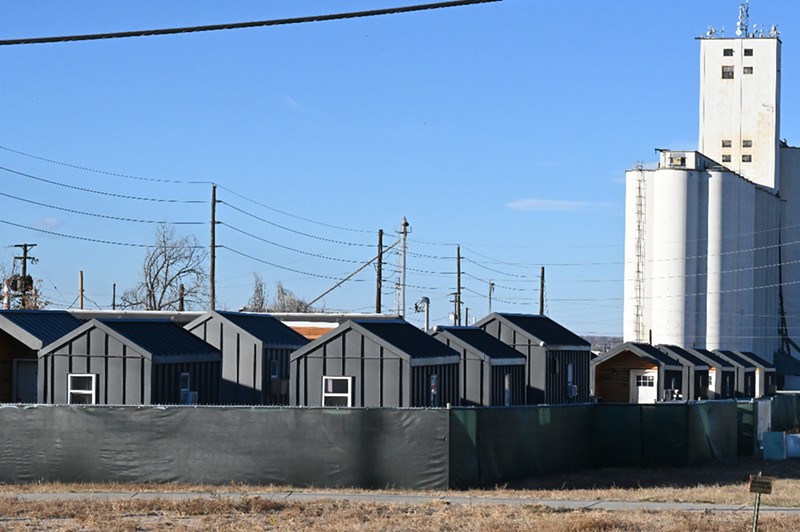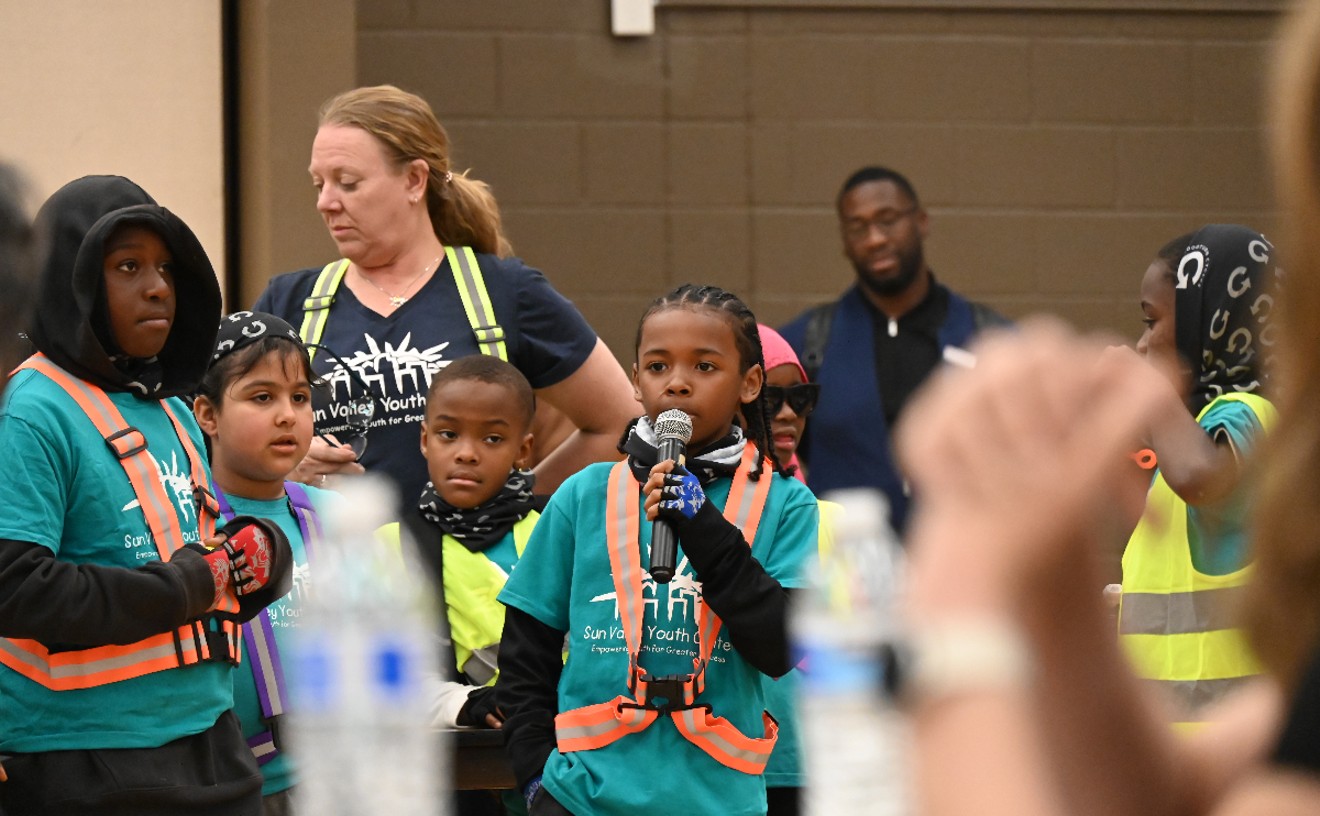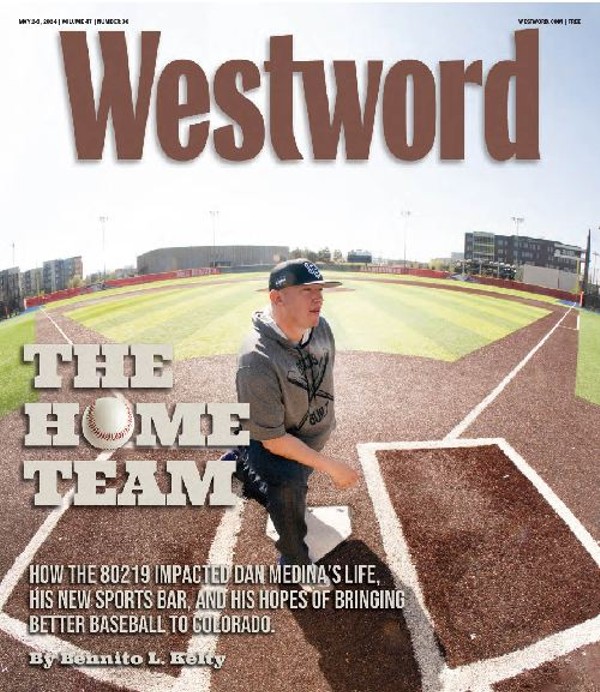The Johnston administration’s ambitious solution to our homelessness crisis has been “micro-communities,” defined as “land parcels about a half-acre or more in size [in which] each resident will have a private unit with a bed and desk [and] community spaces which include restrooms, showers, a kitchen, and gathering spaces.” Micro-communities are a type of transitional housing initiative, which seeks to quickly house people experiencing homelessness and provide them with the safety, security and human connection they need to improve their health and well-being. Some of the micro-communities within the Denver metro are tiny homes, while others are in hotels that the city has purchased. Micro-communities bring wraparound resources to their residents, including but not limited to health care, peer navigation, substance use counseling, behavioral health support and workforce training.
But where, exactly, does the idea for micro-communities come from, and what data exist to support them? Across the United States, tiny home villages, approximately 115 as of 2020, have been constructed as a quick and temporary solution to provide housing for people experiencing homelessness. While micro-communities aren’t a permanent solution, they are surely a better option than being unhoused. Even temporary housing provides a safe space to start any needed treatment, complete applications to obtain vital documents (e.g., driver’s license, Social Security card, birth certificate, etc.) and feel secure.
Micro-communities can act as a soft launching pad for transitioning from houselessness to having a home. They can provide a sense of safety and familiarity in that residents are surrounded by others in a similar situation, and who they may already know. Further, micro-communities provide an opportunity for individuals who may have eviction records to have immediate stability. Several studies have cited eviction as the primary reason for experiencing homelessness. Once experiencing homelessness, it is very hard to go back to stability; preventing homelessness before it happens will lead to a more prosperous city for all. But perhaps the most underlooked benefit of micro-communities is that they reduce residential segregation — a persistent root cause of crime and inequality.
Crime is typically associated with lower socioeconomic status, and crimes of poverty (like loitering or petty theft) are often a response to the lack of resources and opportunities needed to thrive — like the parks, libraries, grocery stores and even restrooms that are abundant in wealthier neighborhoods. This separation contributes to inequalities associated with social determinants of health (e.g., education, housing, employment opportunities, etc.). This persistent divide can be linked to residential segregation, which is the spatial separation of two social groups, and can be traced back to before the Civil Rights Act of 1964. Although much progress has been made since then, there remains a communal level of discrimination and segregation toward people experiencing homelessness, who are disproportionately people of color.
Since the institution of Denver’s camping ban in May 2012, our response to a growing homelessness crisis has been to remove unhoused people from sight without providing a connection to housing, destroying their communities in the process, making an already difficult situation worse, and leaving the people living within them to fend for themselves. Ramping up of displacement often coincides with times when Denver is in the national spotlight – like when the city hosted 2021’s MLB All-Star Game.
Displacement is often conducted in the name of public health and safety, but we don’t have to choose between the well-being of unhoused and housed communities. In fact, displacement is at the very least ineffective in preventing crime and may be making our city more dangerous. Using 2019-2023 data from the Denver Police Department, we conducted a spatiotemporal analysis of the impact of displacement on crime within surrounding areas. Our results showed that crime overall does not change, and violent crimes like murder and assault sometimes increased following displacement. The same pattern holds with evictions; consistently, it appears that one of the best deterrents of crime is a safe place to call home. Since 2012, we have steadfastly pursued involuntary displacement while violent crime continues to increase. Conversely, several studies have tested whether supportive housing projects, like micro-communities, are dangerous for surrounding communities. The simple answer: No, they aren’t. Previous research has shown that supportive housing reduces arrest rates.
Nevertheless, micro-communities have not been without controversy, with many Denverites expressing various concerns ranging from traffic to housing values. Denverites have discussed the traffic and congestion that may result from micro-communities. While congestion may increase during construction, it would resolve after completion — and many micro-communities utilize hotels that already exist. Additionally, individuals living in micro-communities most likely rely on public transport. Further, some have expressed fears that micro-communities may lower housing values in nearby areas, but data disagrees. Supportive housing built in Denver in the 1990s was associated with an increase in housing prices within 1,001 to 2,000 feet. Another study conducted in New York City in 2008 found that housing prices increased after five years, compared to similar areas without a supportive housing development.
Micro-communities are evidence-based, safe for all, and help to reverse our history of segregation. Weaving micro-communities into the fabric of our city promotes widespread access to the resources that we protect and love. Continuing to “punish” those who are unhoused perpetuates a cycle of violence and poor health outcomes, which drain our city’s resources. If we want crime to decrease and a safer, healthier community for all, we need to provide equal distribution of resources and opportunities for social mobility. It is time for us to embrace micro-communities into our own personal communities, to end residential separation and to guarantee access to adequate and equal resources to all.
Change can be intimidating, and the fear surrounding micro-communities is understandable. But micro-communities, when done with a trauma-informed approach and realistic timeline, can provide our unhoused neighbors with a home and community where they can begin recovering from past traumas and addressing chronic health issues. We should care about the health and well-being of everyone, because everyone’s health is interconnected. Matthew Desmond, the author of Poverty, by America, tells us that we must “lift the floor by rebalancing our social safety net; empower the poor by reining in exploitation; and invest in broad prosperity by turning away from segregation.”Samantha Nall, MPH Epidemiology, is a Denver resident and researcher in the Department of General Internal Medicine at the Anschutz Medical Campus; Pranav Padmanabhan is a Denver resident, MPH Epidemiology student, and public health researcher in the Department of General Internal Medicine at the Anschutz Medical Campus.
On the weekend, Westword.com frequently publishes opinion pieces and essays on matters of interest to the community. Have one you'd like to submit? Send it to [email protected], where you can also comment on this piece.











